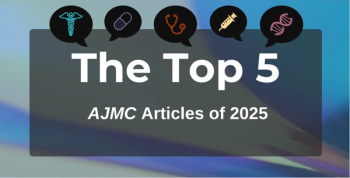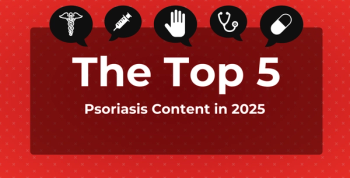
Early Identification of MASLD/MASH Saves Lives: Naim Alkhouri, MD
Lacking awareness of metabolic dysfunction-associated steatohepatitis (MASH) constitutes a critical barrier for enhancing patient care, said Naim Alkhouri, MD. Awareness efforts can not only increase patient access, but also improve the overall wellbeing, experience, and outcomes for this population.
In a
Earlier identification and treatment initiation for patients with MASLD/MASH are critical for improving outcomes, he added; however, insufficient educational programs and awareness initiatives are having negative consequences for patients and clinicians seeking to manage these conditions.
In this interview with AJMC, Alkhouri spoke to the potential avenues clinicians and health systems can take to address this gap, increase access to essential services, and improve patient outcomes.
This transcript has been lightly edited; captions were auto-generated.
Transcript
How can clinicians and providers effectively address gaps in MASH awareness?
It takes a village to increase awareness. In patients with type 2 diabetes, for example, the epidemiologic data showed that up to 60% can have steatotic liver disease.1 But then when you look at ICD-10 codes, having the diagnosis in their chart, we talk about 5%-10%. We have a big gap that we need to work on.
I think to do this, we need more educational programs. We need more programs like what [AJMC is] doing, more websites that target primary care physicians and endocrinologists. We need a campaign that targets also the public and raises awareness about the available treatment options and the available diagnostic tools. We also need to work with the WHO and other organizations on having policies in most countries to tackle MASLD and MASH. We are working on ICD-10 codes also that reflects the entire spectrum of steatotic liver disease, and we need to have screening for MASLD and for risk stratification of patients to become a quality metric that PCPs and endocrinologists have to document every time they see a patient who is at high risk, such as those with type 2 diabetes.
Until this becomes a quality metric, we will continue to have issues with identifying these patients and, more importantly, risk stratifying them. At the end of the day, many patients with steatotic liver disease, MASLD, may not have any fibrosis, and their prognosis is very good long term. Most likely, they will die from heart disease and extra hepatic cancer like the rest of the population, and they have very low chances of progressing to cirrhosis or developing significant liver outcomes.
Doing this at the moment you diagnose MASLD, giving peace of mind to some patients, and maybe following them every 2-3 years will be a very good pathway for the majority of patients. But then the 20%-30% of patients that are at risk of having significant and advanced fibrosis, we could be saving lives by early identification and early treatment. That's why it's more important than ever today to find these patients, because we do have FDA-approved treatments, and we expect to have more in the near future.
Reference
1. Epidemiology of non alcoholic fatty liver disease. PrimaryCare notebook. Updated November 17, 2022. Accessed May 5, 2025. https://primarycarenotebook.com/pages/general-information/non-alcoholic-steatosis/epidemiology-of-non-alcoholic-fatty-liver-disease-nafld?utm_source=chatgpt.com
Newsletter
Stay ahead of policy, cost, and value—subscribe to AJMC for expert insights at the intersection of clinical care and health economics.








































